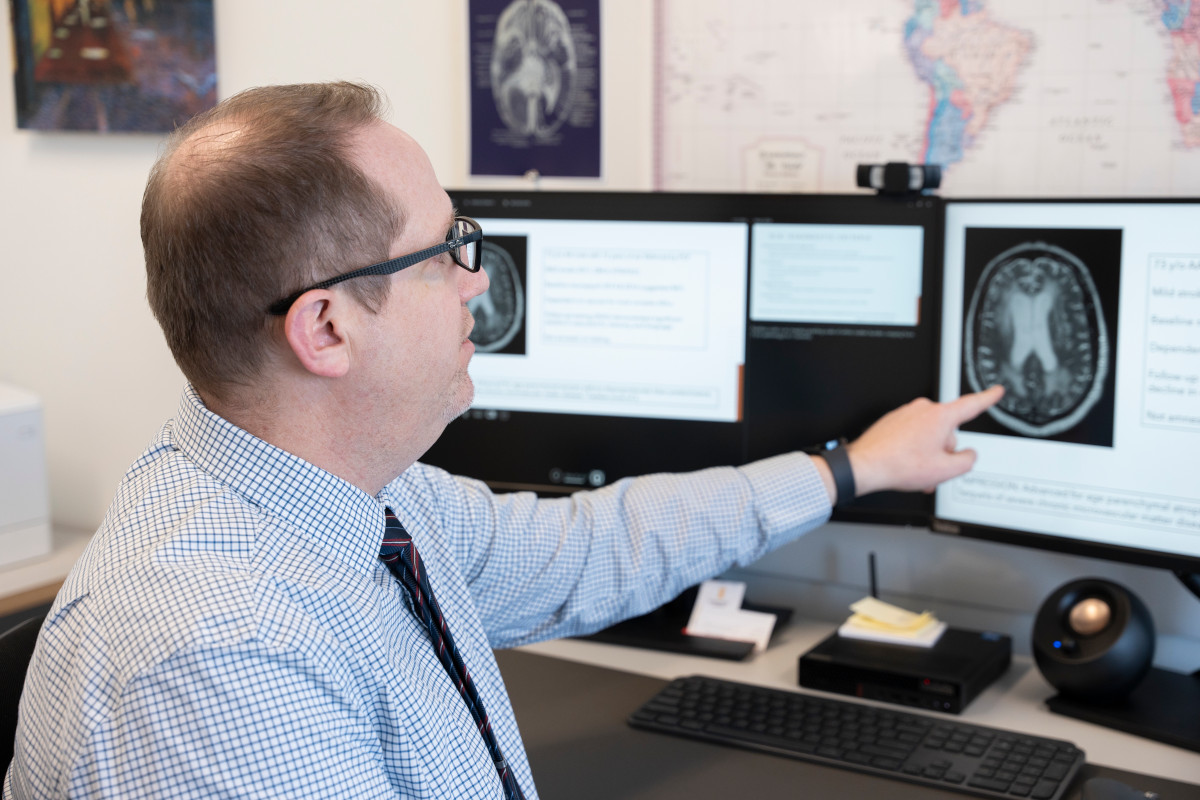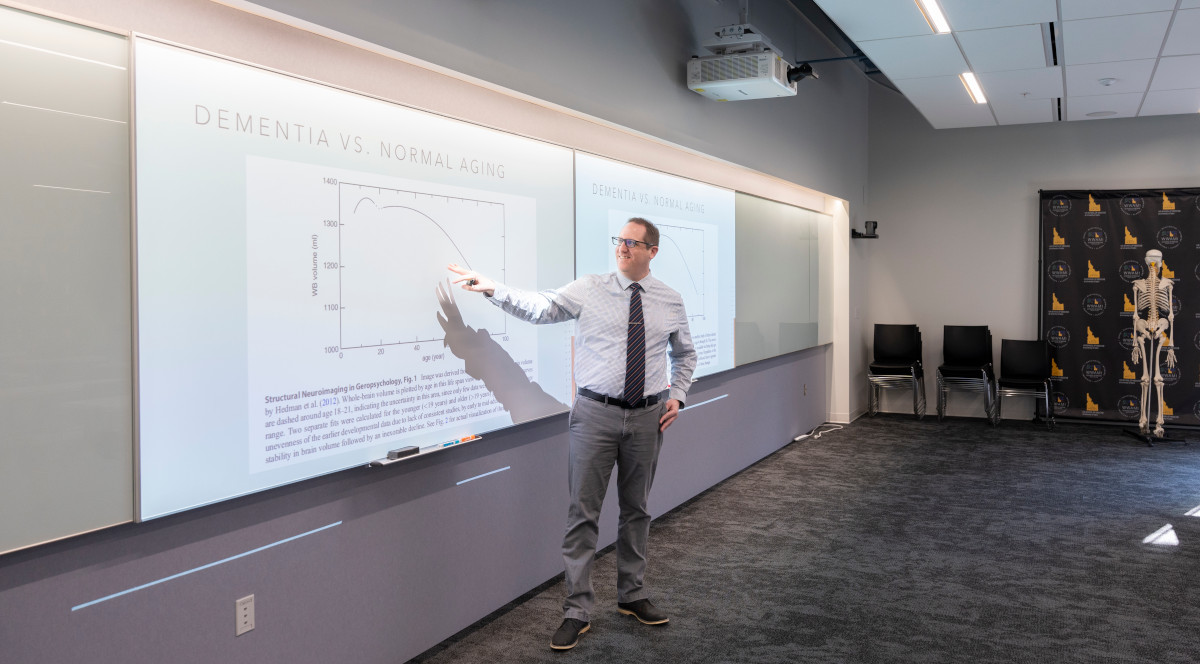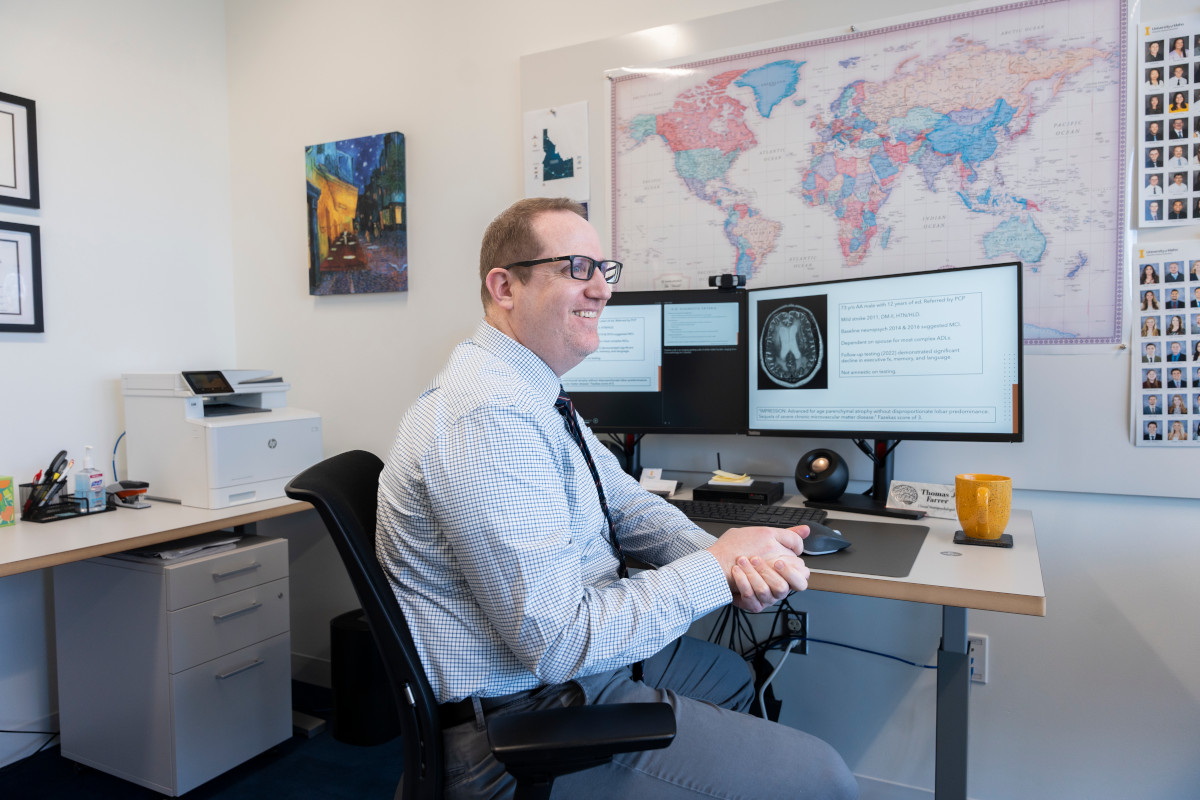The time is now
Addressing key risk factors could stall the global rise in dementia
Article by Emma Zado, University Communications.
Photos by Visual Productions.
There are 55 million people worldwide diagnosed with dementia, a number expected to triple by 2050. But what if that rise could be stalled?
Dementia is a condition where cognitive decline negatively impacts daily living. It is caused by diseases that destroy nerve cells and brain function.
University of Idaho School of Health and Medical Professions Professor Thomas Farrer researches reversible cognitive decline and how untreated health conditions can mimic or increase the risk of dementia.

By analyzing public health data and studying brain scan images, he discovered that addressing certain risk factors can lead to a reversal of cognitive decline.
“Alcohol and opioid pain medication abuse is common in middle-aged and older adults,” Farrer said. “That substance abuse causes cognitive decline. If you were to get the necessary treatments and stop using those drugs, you can see improvement in cognition.”
Before teaching at U of I, Farrer practiced as a clinical neuropsychologist for eight years. His interest in dementia began during his training, where he enjoyed the mystery each case presented.
Now is the time to double down on our research efforts and prioritize public education to address these issues. We can reduce people’s risk for dementia. Thomas Farrer, SHAMP professor and researcher
“Over time, I realized that there’s no cure for dementia,” he said. “If we don’t have a cure, and the number of people with dementia continues to go up dramatically, we need to do everything we can to prevent it from happening.”
Many things can negatively impact the brain and increase the risk of dementia or cause cognitive problems later in life. However, some health conditions that increase the risk of dementia are preventable or treatable.
Sleep disorders like insomnia, mental health conditions like depression and even addiction are among the treatable health conditions that are associated with an increased risk of dementia and cause of cognitive decline in older populations, Farrer said.

Depression in a 75-year-old can appear to be dementia. An individual may experience memory loss or changes in demeanor, behaving as if they have dementia when they have treatable depression. Addressing the patient’s depression can improve their cognitive functioning.
Identifying potentially treatable causes of cognitive decline can lead to earlier screening for underlying medical conditions that may be contributing to or causing that decline, said Lynn Schaefer of Nassau University Medical Center in East Meadow, New York, who is collaborating on a book with Farrer about reversible cognitive decline.
Schaefer said that by screening for these treatable conditions, physicians and other providers can determine if a patient would benefit from a more comprehensive assessment for dementia.
“This research can increase awareness of modifiable risk factors for dementia so that people can make informed decisions for their health to best reduce their odds of developing dementia,” Schaefer said. “It can bring people a sense of control and hope.”

Farrer’s suggestions to help prevent cognitive decline include engaging in wellness activities like avoiding ultra-processed foods, exercising regularly and visiting a primary care doctor.
“We have to have public health interventions, public health campaigns and increased knowledge about these things,” Farrer said. “At one point, no one cared about smoking, and then there was a public health intervention about the dangers of smoking and now far fewer people smoke. There are success stories of public health interventions, we just have to educate people.”
While dementia diagnoses are expected to increase due to a growing aging population, the rise may be less significant than initially projected as the number of misdiagnosed cases decline, he said.
“The time is now. I mean that from both a population health and a research standpoint,” Farrer said. “This is an area that is attracting significant research interest because we are on the brink of a major public health challenge. Now is the time to double down on our research efforts and prioritize public education to address these issues. We can reduce people’s risk for dementia.”
Published in April, 2025.









